
It is increasingly difficult to review phones running the Android operating system these days. After all, there seems to be a new Android handset every other day and, more and more, the difference between one and another of them can be rather small. This is an even bigger challenge when you look at the field of Android tablets, since their specs seem to be exactly the same with only the subtlest of differences from one to the next. There are, of course, factors that can weigh into which Android phone one chooses. Among them, of course: How large is the screen? What processor do they pack inside? What version of Android are they actually running?
These certainly will affect some small portion of the market looking to purchase a new Android phone but, for the most part, I suspect it will often come down to the simple of questions: What does my carrier offer and… how much is it?
I spent a few weeks with the HTC Sensation 4G and concluded that if you are on T-Mobile, and are not looking for a $49 phone, this is worth serious consideration.

Here’s what HTC and T-Mobile have to say about it:
Wow-Worthy Touch screen: Experience movies and games in their full cinematic glory. The HTC Sensation™ 4G is T-Mobile’s first 4.3″ display with super high definition (950 x 540). Colors seem to pop off the massive screen. Wow.
Screaming Fast Dual-Core Processor: Just say no to the buffering bar. With a Qualcomm® Snapdragon™ 1.2-GHz dual-core processor running on America’s Largest 4G Network™, huge movie files download in a snap. Play the latest games, listen to new sounds, upload videos, whatever—all at the same time.
All the Movies and TV you need: The HTC Sensation™ 4G comes preloaded with HTC Watch™ and T-Mobile® TV HTC Watch™ gives you access to a huge selection of Hollywood blockbusters. And with T-Mobile TV, you get live TV and video on demand, such as The Daily Show, ABC Mobile, and ESPN Mobile TV.
Watch, capture, upload. Fast: The HTC Sensation™ 4G Android™-powered phone makes watching movies, taking photos and videos, and sharing your life on Facebook® or YouTube™ easier and faster—and with all-new HTC Sense 3.0, you’ll do it all in a totally immersive experience.
Stunning HD Video and photos: Shoot full HD video in 1080p resolution with full stereo sound— then upload away. A rear-facing 8 MP autofocus camera with dual LED flash gives you gorgeous photos. And with instant capture, the moment you press the button, your photo is captured and ready to post.

HTC’s packaging is fairly standard these days, which makes sense since they have so many different handsets currently available with new ones constantly rolling out. The nice heavy box has a top that lifts off and rightly the cover is the phone itself. If you pull out the phone and lift up the cardboard beneath it, there are three separate compartments with each housing one key accessory.

There are the ubiquitous headphones which are functional, but not much more than that.

There is a wall adapter which, of course, is a 110V adapter in the US and a 220V adapter where that’s appropriate.
The third compartment houses the USB cable (I figured you didn’t need a picture of that).
In keeping with the trend, we’ve seen recently there is no included case or pouch with the phone. This is one of those little annoyances that bugs the daylights out of me. If you tend to be an early adopter and buy a phone when it first comes out, this means you either have no protection for it or you have to hope that you have something lying around the house that will fit “well enough”. When you’re spending this kind of money on a mobile device, you shouldn’t have to hope you’ll already have something lying around.

So let’s take a look at the phone itself.
It follows many of the key design elements we’ve seen that coming from HTC over the past months. It is almost entirely screen with the earpiece at the top and capacitive buttons along the bottom.
Truth be told, from the front the phone looks very much like a small but close cousin to the HTC Flyer that Judie and I reviewed last month.
Specs:
Height: 4.96 inches (126.1 mm)
Width: 2.57 inches (65.4 mm)
Depth: 0.44 inches (11.3 mm)
Weight: 5.22 ounces (148 grams)Rechargeable 1520 mAh lithium-ion battery
WCDMA: Up to 400 minutes of talk time
GSM: Up to 495 minutes of talk time
1.2-GHz Qualcomm® Snapdragon 2 dual-core processor
Android™ 2.3 with HTC SenseShare photos/videos on Facebook®, Twitter™, or YouTube™
Facebook® and Twitter™ for HTC Sense
Friend Stream
Gallery, music, and FM radio
SRS virtual surround sound for wired headphones
DLNA for wirelessly streaming media from phone to TV or computerInternal phone storage: 1 GB
RAM: 768 MB
Expansion slot: microSD™ memory card (SD 2.0 compatible)4G: Up to 14.4 Mbps download speed and up to 5.76 Mbps upload speed
Wi-Fi®: IEEE 802.11 b/g/n
Bluetooth® 3.0
A2DP for wireless stereo headsetsHD video recording
1080p HD video capture and sharing
Front camera
VGA fixed-focus color camera
8-megapixel color camera
Autofocus and dual LED flash4.3-inch (109 mm) wide screen
TFT capacitive touch screen
qHD 540 x 960 resolution

It took me a while to get used to using the capacitive buttons on many of the Android handsets that we have tried. As I noted in my review of the HTC T-Mobile MyTouch 4G, there was something really quite lovely about getting back to using a phone with real physical buttons along the bottom. At the same time, I have gotten used to using the capacitive buttons and these were very responsive.
One of the things that impressed me most about the HTC Flyer was that when you rotated the device from portrait to landscape the capacitive buttons rotated with you and appeared at the bottom of the screen rather than along the side. Obviously this device is not large enough and does not have enough of a bezel along the sides to allow for that. It is too bad, since would have been a nice touch.
One of the things I also liked about the MyTouch 4G was the optical mouse which is nowhere to be found on this device.

I’m struck these days by the fact that HTC sometimes chooses to have a large speaker opening for the earpiece while at other times it chooses to have an ear piece that runs the entire length of the device. I’m not sure how they make this determination but I do know that I like this balance. It is far larger than the small one on the MyTouch 4G but it does not run the entire length of the device the way it does on, for example, the HTC HD7.

Along the right side of the device there is nothing to speak of.

Along the left there is the volume control and a micro USB charging port. I found the volume buttons fairly easy to access. They are raised just enough to feel them without looking down but not so much that they protrude too much.

The back of the phone takes a similar approach to the HTC Flyer, as well as a number of other phones we have seen from HTC. There are three distinct sections to the back and they run at an angle from the top left to the lower right — like a beauty pageant winner’s sash. I don’t like the way this looks on some of the phones, particularly when HTC uses bold colors, but this kind of appealed to me from an aesthetic perspective. It gives just enough interest without being too loud.

The two holes at the bottom of the lower portion of the back are, believe it or not, for the data connection antenna. They are an attempt to get a stronger signal into and out of the device.

In this picture you can see the camera and dual LEDs. Right below them is yet another whole. This is apparently for the Wi-Fi antenna. The whole above the camera lens is part of the phones noise cancellation system.
What’s striking to me about all the holes is the way in which different companies address the technical and aesthetic issues with which they are concerned. For example, I think all of these additional holes look rather silly, but I do appreciate the fact that HTC was willing to make this compromise choice in order to enhance the user experience. Apple, on the other hand, would never go this route. From a visual perspective I appreciate that but, truth be told, if I had the option of having holes in my iPhone 4G that would increase the phone’s reception I think I would go that route.
Oh, and if you are wondering, I did not run into any “death grip” issues.

So let’s look at the HTC sensation alongside some other devices.

Here it is with the iPhone 4. As you can see, the screen on the Sensation is substantially larger than the iPhone. At the same time, I think they are about equal in the “looks department”.

And side by side.

When placed next to the T-Mobile MyTouch 4G you once again see a significant discrepancy between the size of the screens. You also see the difference between the capacitive buttons and the physical ones. This is largely going to come down to a matter of personal preference. Do you like a smaller phone with a smaller screen or a larger phone with a larger screen? Do you like capacitive buttons or do you prefer physical buttons? Choice is good.

As you can see, they are about the same thickness, but the Sensation is noticeably larger.

Here it is next to the T-Mobile HD7 Windows Phone. While the phones may look similar in many respects I must say, the HTC Sensation lows its cousin out of the water in the design department as well as in the overall feel of the device.

And the Sensation and the HD7 from the side.

All in the HTC Family.

All in the family with a party-crasher competing for attention from the left.

The screen on the HTC Sensation is nothing short of gorgeous. It’s big, vibrant and easy to read.

The phone is on T-Mobile’s network, so it comes with such nice touches as T-Mobile’s WiFi calling. Thomas kept telling me how nice it was to deal with T-Mobile and how many small, but impactful, touches they add and he finally convinced me. A month later AT&T announced it was looking to acquire the carrier. 🙁

The phone is running the new version of HTC Sense. First seen on the HTC Flyer, this custom HTC skin is something that you will either love or hate. My suspicion is that there will be no middle ground. Some have asked whether or not custom skins are still needed for Android, and I have to say, I think they do add a great deal a functionality to the device. I like the first version of Sense, but I love this new version.

One of the things I especially like is the ability to choose four applications or functions that can sit on the lock screen and be accessed directly by simply grabbing the icon for that application or function and dragging it into the circle at the lower portion of the screen. It makes it super fast to access e-mail or the camera functionality. Personally I wish there was the opportunity to add a few more icons but I suspect from an “ease of use” perspective having four keeps things straightforward and clean.
If you want to access something other than the four choices you made you simply grab the circle and pull it up to the middle of the screen.
As noted, I like what HTC has done with Sense UI and really appreciate the added visual appeal and ease-of-use it brings to the handset.

When I went to open the phone I was greeted by a bit of a surprise. On the HTC Flyer, one of the two “soft touch” areas on the back lift off to reveal the microSD slot. Some reported having difficulty getting the cover off. While I had no such issue, I was impressed with the fit and finish of the piece. I took special note of it because I had looked at a different android handset a few months ago within a few days of using the phone the back cover didn’t sit perfectly flush with the phone, which gave the device a cheap feel overall.
When I went to remove the cover of the HTC Sensation, I assumed that either the upper or lower portion of the back plates would come off. I was wrong. What HTC chose to do with this phone is to have the entire back pull off to reveal all of the phones innards. Simply pushing a button on the lower portion of the handset releases the back cover just enough so that you can run your fingernail around it and pull literally the back and sides off the phone. The result of this approach is a handset that feels remarkably solid in your hand and, while it looks as if the back is pieced together (because in effect it is) it has the rigidity that one might find with a unibody design; I was impressed.

Because this phone is running on T-Mobile’s network, it uses a standard Sim card; it also accepts a microSD card for added storage.

At the top you can see the camera sensor and dual flash. Having the camera expose this way made me exceptionally nervous, especially on a loaner device, so I put the cover back on as quickly as possible.
Removing the back also lets you access the user replaceable battery. This is a good thing since I found the battery life on the phone to be just about what I expected and have experienced with most other handsets recently–that means someone who is a heavy phone user the way I am will need to either keep a charger or a spare battery around.

Since I used the G11 to shoot pictures of the HTC Sensation, I thought it only fair to use the Sensation to grab a shot of the Canon G 11.
Overall I have been a bit disappointed with the vast majority of cameras on phones. They take decent enough pictures and they do so conveniently but I keep finding myself going back and using my Canon G11 for anything serious.

As you can see, the camera does a good job; it’s not going to replace your dedicated camera, but it does do a good job.
I shot some video as well only the subject ended up not wanting it used and this happened AFTER I had returned the phone. Like the stills, the video was good… but not GREAT. I wouldn’t say this is the best camera or video phone that I’ve used but it is certainly up there and gets the job done.
So that’s the overview of the HTC sensation 4G from a more traditional perspective. The question that remains is, what was the experience of using the device? Overall I have to say that it is probably the best Android handset I’ve tried. I love the large screen which is big, bold and incredibly clear. I like the solid feel of the handset, which is clearly the result of this new design that has the entire back and sides as one removable piece. I found the call quality to be pretty much on par with the best devices HTC has been releasing and, as is often the case, I found the speaker to be passable but not anything to write home about. The dual core processor serves the device well in that I didn’t experience any slowdowns whatsoever during my time with it. And the combination of the beautiful screen, the fast processor and HTC’s updated Sense UI made for a lovely experience. In other words, there were no real surprises in either direction.If I were in the market for an android handset there’s no question in my mind that this is the one I would purchase.
Details and ordering can be done through T-Mobile’s website.
MSRP: $549.99 ($199.99 with a new two-year contract)
What I Like: Fast; beautiful screen; decent call quality; excellent build quality; New Sense UI; T-mobile tweaks that add value; decent camera for stills and video
What Needs Improvement: No pouch or case included; Speaker is okay but still not as good as I believe it could be

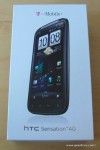
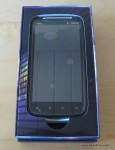

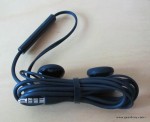
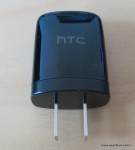
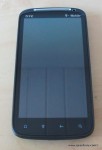
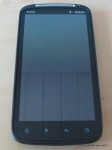
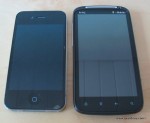
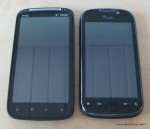
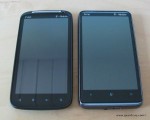








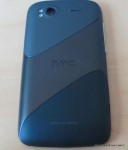




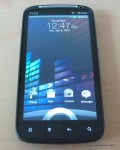

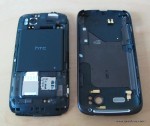
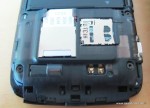
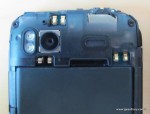
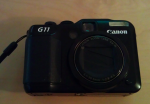

I think HTC has a long standing history of pretty crappy phone speakers. Unfortunately it seems that not many improvements have been made in the later models. Still, if that’s the worst thing about this phone coming from you Dan, then It must be a pretty solid piece of hardware. Great Review.